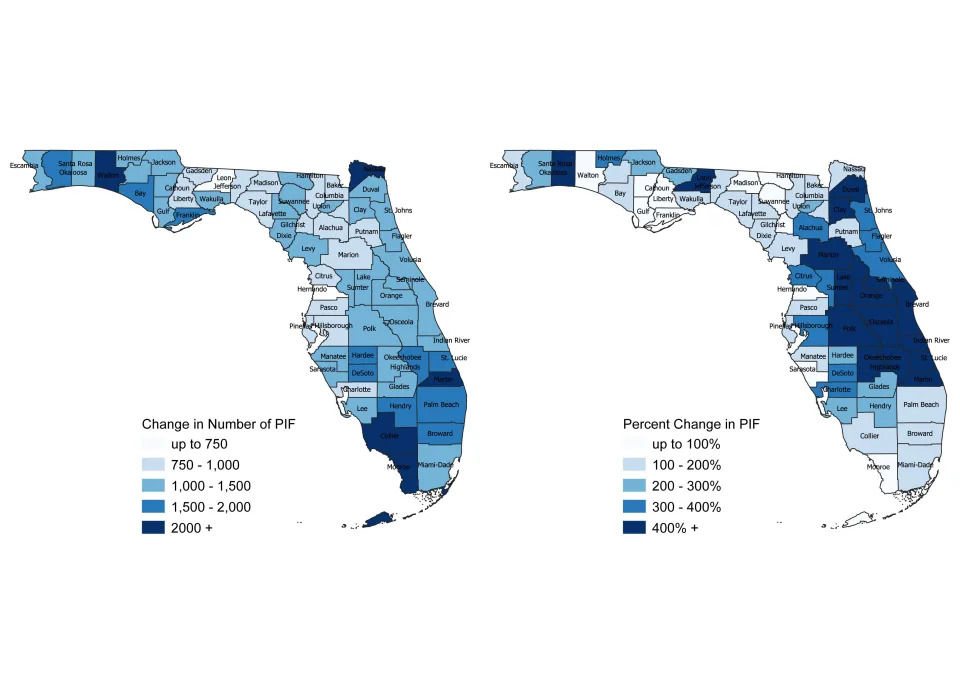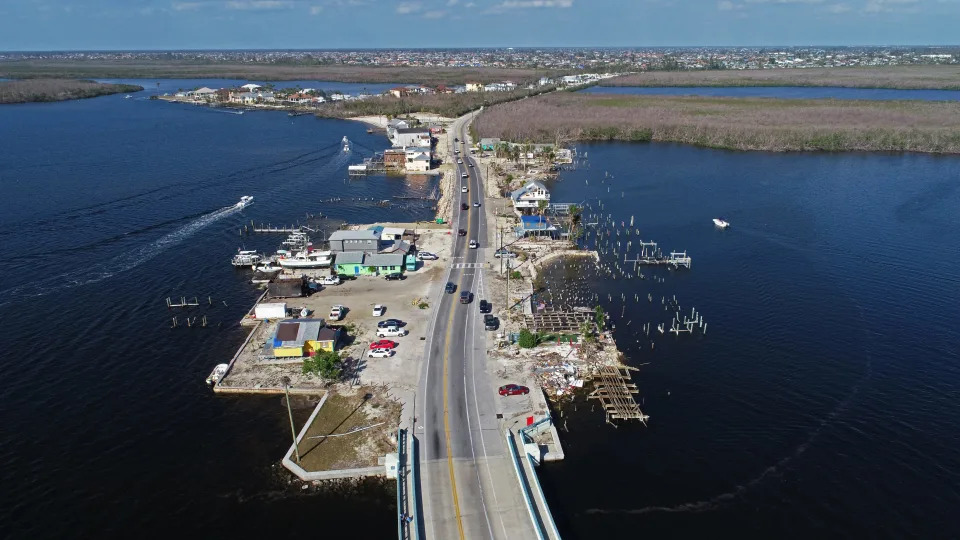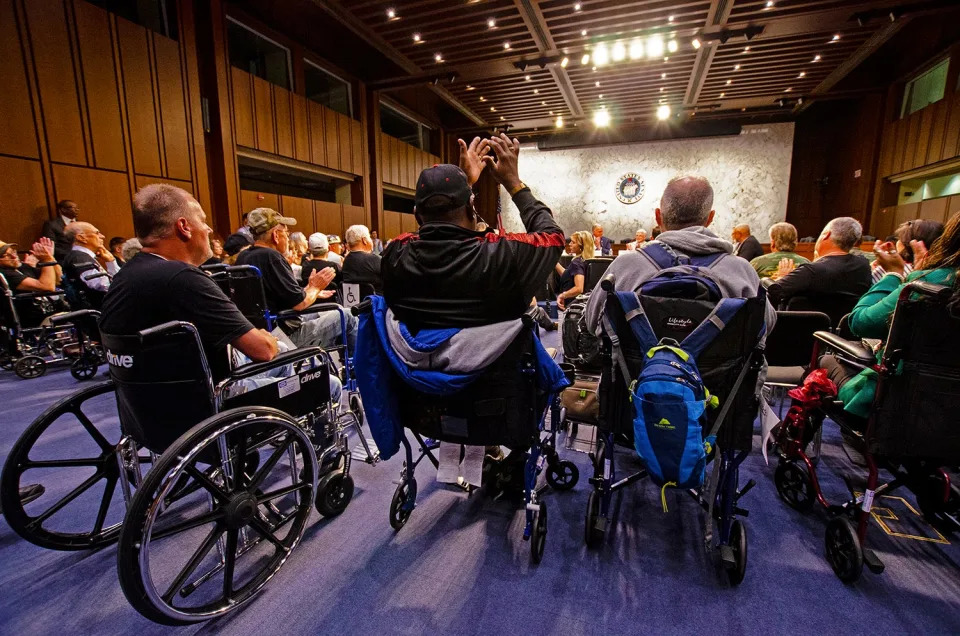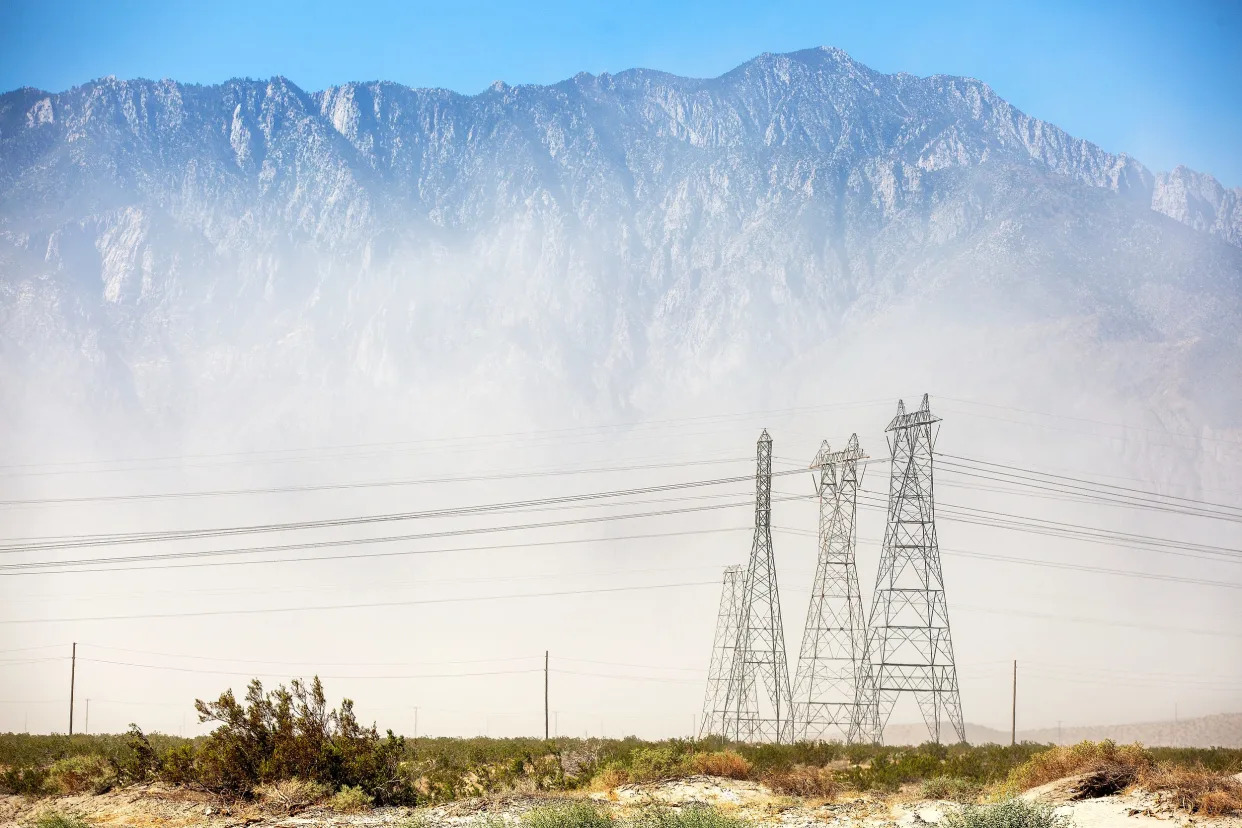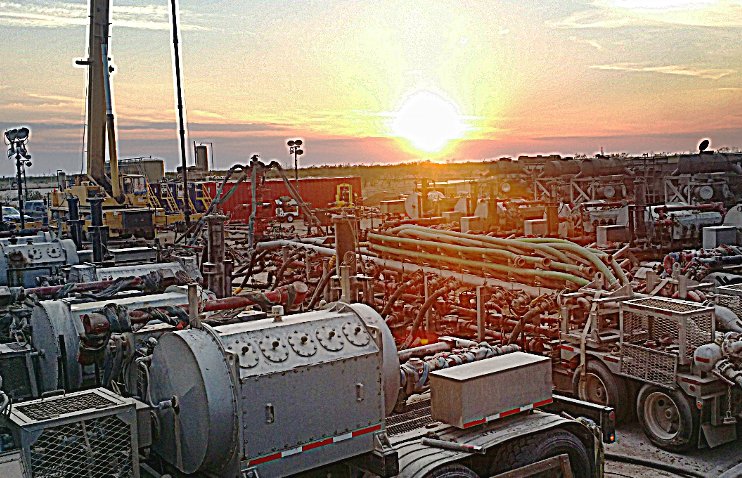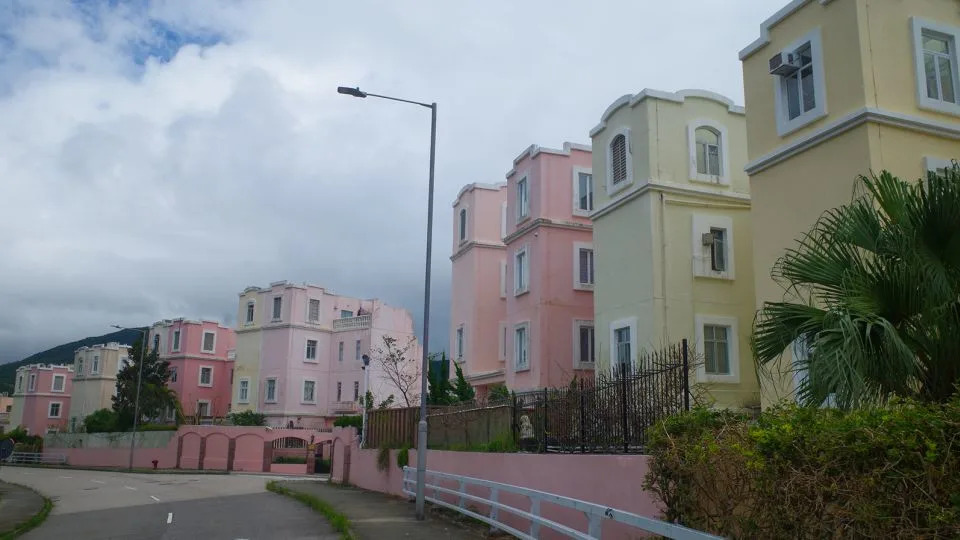Vanity Fair – Politics
Robert F. Kennedy Jr.’s Mad, Mad, Mad, Mad World
Vanity Fair hits the Kennedy family’s Cape Cod compound for a peek into the controversial 2024 candidate’s wet hot American summer.
By Joe Hagan – September 27, 2023

On an overcast afternoon in mid-August, I find myself on a ferry to Nantucket with Robert F. Kennedy Jr.—son of Bobby, nephew of John, Democratic candidate for president of the United States. Trapped between Kennedy on my left and a window facing the Atlantic Ocean to my right, it is no exaggeration to say this is the low point of my summer—a supposedly fun thing I wish I’d never done.
A couple weeks before, Kennedy had responded to an interview request by calling and expressing exasperation at various hatchet jobs in mainstream media and skepticism that a correspondent for Vanity Fair, a card-carrying member of the legacy media, might be fair to him. “Your editor won’t let you write anything positive,” he promised.
Kennedy had had a rough ride since the summer started (he was virtually set ablaze by New York magazine) and so I proposed that instead of raking over his many controversial ideas—like his belief that the media has been infiltrated by the CIA, as he told the right-wing provocateur James O’Keefe in an interview this year; or his claim that pesticides in drinking water are causing “sexual dysphoria” in boys, as evidenced by a frog study—we meet up at the Kennedy compound and talk about his family history. Lean into his Kennedyness, have a little fun. I was scheduled to be on Cape Cod for vacation anyway and figured I’d go take the cut of his jib.
“So you’re saying this won’t be a hit piece?” he wrote back.
And so Kennedy agreed, reasoning that since we had a mutual friend in the late Peter Kaplan, his college roommate from Harvard and a mentor of mine in the journalism business, I would treat him fairly. The onetime editor of the weekly New York Observer taught me to give subjects a fair shake, though not to be afraid to have a point of view either. The first thing Peter used to ask when I returned from an interview was, “Did you like him/her?”
“What do you think is a greater threat to the republic, censorship or January 6?” Kennedy asked, then clarified that the answer is censorship. “You could blow up the Capitol and we’d be okay if we have a First Amendment.”
When I arrive at the Hyannis Port compound, I’m told Kennedy is on a boat somewhere and running late. And so I idle in the dining room of his house, a white colonial with soccer balls on the lawn and bicycles piled against the siding. I peruse books on his shelf: Best American Crime Writing 2004; How Al-Anon Works for Families & Friends of Alcoholics; Anything for a Vote: Dirty Tricks, Cheap Shots, and October Surprises in U.S. Presidential Campaigns. There’s a photograph of Kennedy with a falcon on his arm and a picture of him and his brothers as young men, posing shirtless in an outdoor bathtub together. Near the front door are two iconic photos, one of the late Bobby Sr., holding his son; the other of John and Jackie Kennedy on a boat, Jackie’s scarf blowing in the wind.
A woman strolls in, barefoot and wearing hot pink sweatpants and a sleeveless T-shirt. It’s Kick Kennedy, RFK Jr.’s 35-year-old daughter. I tell her I’m waiting for her father, who by now is 45 minutes late. “Welcome to my life,” she says. She lives in Los Angeles and had planned to come out to the compound for a week but then one week became two which became three and, well, you know how summer on the Cape is.
Word comes down that I’m to meet Kennedy at the boat dock and go directly to the ferry terminal—he has to catch the 4:15 to Nantucket for a fundraiser and our time at the compound is scotched. When I express disappointment, Kick offers to take me to the crow’s nest upstairs for a quick view of the compound. It’s the same view Kennedy Jr. used as a backdrop in a social media post this summer, meant to underscore his family legacy. We climb a nautically themed stairwell and pass by a room with a man face down on a bed (Kick asks me to whisper lest we wake her friend) and emerge on the roof to a sweeping view of the houses that make up the compound, each one tidy and separated by fences. Boats dot the harbor beyond.

She points to a grand mansion festooned with red, white, and blue bunting. “That’s the house that everyone thinks is ours and it’s actually John Wilson’s from the college-admissions scandals,” she says casually, referring to the chief executive of Hyannis Port Capital accused of bribing college administrators to help his kid get into the Ivy League.
That house is a false flag, I joke.
That’s funny, she laughs, because she works at an art gallery called False Flag.
Kick surveys the surrounding property. “Grandma’s over there, and this was Jackie’s house, and now it’s Teddy Jr.’s house, and our house is new, meaning we’ve had it for 20 years,” she says. “Then over there, if you walk straight down, you’ll see the famous field where the touch football games happened.”
“I give famously good tours,” she adds. If I wasn’t presently scheduled to meet her father, she says, “I would have grabbed a golf cart and taken you to Squaw Island,” a scenic marshland nearby.
“Have fun with whatever they’re going to force you to do,” she says and wanders back to the living room.
Iwalk down the street toward the boat landing and soon see the unmistakable figure of Robert Francis Kennedy Jr., 69, barefoot in a T-shirt and faded neon-print swim trunks. I greet him and his entourage, which includes Maria Shriver and her brothers, Timothy and Mark. Everybody is jovial and relaxed, just back from a trip to Baxter’s, the famous fried-seafood shack near the Hyannis ferry terminal. “He’s going to do the first nice article about me,” Kennedy says by way of introduction. “The first one.”
“Oh, thank God!” says Maria, laughing.
Then Kennedy is informed he has to leave in 10 minutes to catch the 4:15 ferry.
“4:15? Fuck.”
Yeah.
He still has to tie up his sister Kerry’s motorboat after their pleasure cruise and I join him as he jogs to the dock and motors back into the harbor. His piercing blue eyes stare straight ahead, jaw firm, face stony, the classical profile of a Kennedy. I’d recently read his memoir American Values: Lessons I Learned From My Family, and I ask where his maternal great-grandfather, John Francis “Honey Fitz” Fitzgerald, used to sunbathe nude. He gestures faintly to a beach along the southern shore but is distracted because he can’t find the mooring.
I spy one with “Kennedy” printed on it and motion him toward it. There’s a pink buoy with a long stick for hauling the line up. “Grab the whip!” he yells hoarsely over the motor. “Haul it aboard super fast, get the whole rope on board.”
I yank the wet rope on board and Kennedy ties up the boat. The motor is still running but Kennedy can’t figure out how to turn it off. A dock worker who comes to fetch us says he’ll do it for him and we race back to the house and jump into a black SUV with Kennedy’s hired security guards. “If we go fast,” says Kennedy, “we can make it in like seven minutes.”
We gun it to the terminal and are fast-walking to the gangway, the last to board the ferry, when we’re stopped by a guard in mirrored glasses. “Sir, you gotta put shoes on, please,” he says, motioning to Kennedy’s bare feet.
An aide quickly digs his formal dress shoes out of a suitcase and Kennedy yanks them on, looking faintly ridiculous as he strides onto the ferry in neon trunks and black dress shoes. He heads to the upper deck, known as the Captain’s View, and we sit side by side in bucket seats.
After the whole mad scramble, we now have an hour to talk. My original plan scuttled, I turn to my notebook, which is full of questions.
Three days before my arrival, Peter Baker of The New York Times had published a story on the Kennedy family’s unhappy feelings about Robert’s campaign; his taking on their friend and ally Joe Biden; his claim that John, and possibly Bobby Kennedy, were assassinated by the CIA. “That’s the third story the Times has done,” Kennedy says grimly. “The same story, three times.”
“Well, I have a big family,” he says. “Some of them agree with me, some of them don’t agree with me. I think it’s like everybody’s family. People are entitled to their opinions. I can love people who disagree with me about the Ukraine war or about censorship, whatever.”

He notes that sister Kerry, a critic of his campaign, loaned him her boat for the afternoon. No hard feelings. “She saw my boat didn’t have a key so she said, why don’t you take my boat?”
He crunches some numbers. “I think there’s 105 cousins now,” he explains. “So I think four or five of them made statements against me. And then a lot of other ones showed up for my announcement.”
Does it hurt his feelings?
“No,” he says. “We grew up in a milieu where we were taught to argue with each other passionately every night at the dinner table. There’s five or six members of my family who work with the Biden administration. And there’s a lot of other ones who have 501c3s that are doing business with the Biden administration.”
Kennedy finds President Biden “congenial” but disagrees vehemently with the war in Ukraine (he believes the US is partly responsible for starting it) and accuses the administration of censoring his views on COVID vaccines and lockdowns (in short, the former are dangerous, the latter unnecessary and dangerous). Indeed, he joined a lawsuit against a consortium of media and tech companies, including the BBC, The Washington Post, and Google, over alleged violations of his First Amendment rights. Among other things, it accuses the White House of leaning on Twitter to take down his posts or labeling them misinformation. (A week after I see Kennedy, a federal judge will deny Kennedy’s request for a temporary restraining order against Google and YouTube, citing “the public interest of preventing the spread of illness and medical misinformation”; later still, an appeals court will rule against the White House, saying it “coerced the [tech] platforms to make their moderation decisions by way of intimidating messages and threats of adverse consequences.”)
For Kennedy, the “legacy media” is corrupted by pharmaceutical companies and an implicit allegiance to the Democratic Party. The federal judge who ruled against him is an appointee of President Joe Biden and is therefore in bed with the whole gang too—as am I. I assure Kennedy I wasn’t given any marching orders from the DNC or Big Pharma, nor was I on the CIA payroll. “You wouldn’t be sitting there if you were willing to depart from official orthodoxy,” he tells me, “so there’s a self-censorship that goes on.”
To be honest, it isn’t a great way to start off an interview. But for Kennedy, this is clearly personal. “I was the first person censored by the White House,” he says. “Thirty-seven hours after he took the oath of office, White House officials contacted Twitter and told them to take down my post.”
The post suggested baseball legend Hank Aaron’s death was related to his COVID vaccine. None other than Ohio Republican Jim Jordan would later defend Kennedy, saying “there was nothing there that was factually inaccurate. Hank Aaron, real person, great American, passed away after he got the vaccine. Pointing out, just pointing out facts.”
“Nobody has ever pointed to a single post that I made, ever, that was factually inaccurate,” Kennedy continues. “We have probably the most robust fact-checking operation of any news organization in the country.”
He’s referring to his nonprofit, the Children’s Health Defense, which he says has 350 PhD scientists and medical doctors who make sure all his public statements are “vetted and super vetted.”
Kennedy says he lost a lot of followers after Twitter took down his anti-vax posts. “They lost me 800,000 followers,” he says. “They removed 268,000 people. People still, in this country, don’t know that the vaccine is killing kids. There’s what, 1,500 student athletes that have dropped dead on the field for myocarditis? Americans don’t know that…and none of it’s recorded. It’s all censored.”From the Archive: Far From the Tree
I’d actually read that claim before—Ron DeSantis’s controversial surgeon general in Florida, Joseph Ladapo, hyped the theory from a study that admitted in the fine print that it could not “provide a definitive functional proof or a direct causal link between vaccination and myocarditis”—so it couldn’t have been very successfully censored, no?
“Well, you read little tiny bits, but you’re not reading about the kids that I read about every day,” he says. “New children dying. If an individual died of COVID, it’s front-page. If a guy dies of the COVID vaccine, you will not find it in a paper. That’s not right.”
Tonally, Kennedy’s raspy voice can make it hard to tell whether he’s pissed off or just struggling to make himself understood, but it’s ambiguous enough that I ask him if he’s pissed off.
“Do I go around angry?” he says. “No.”
But as I question him, he gets increasingly tense. His arms are crossed tightly across his chest. He hasn’t laughed or smiled once since we started talking. Given all that he’s saying about Biden, plus his wholesale embrace of, and by, the conservative media, plus his appearance before the Republican-led, anti-Democrat Select Subcommittee on the Weaponization of the Federal Government, not to mention unlikely fans like Donald Trump, Roger Stone, Steve Bannon, and Ron DeSantis (who said he would consider making Kennedy the head of the FDA in his administration), I can’t help but wonder who Kennedy would vote for in a general election matchup between Joe Biden and Donald Trump in 2024.
“I wouldn’t answer that question,” he replies. “I think the Ukraine war is an existential war for us. I think we are walking along the edge in a completely unnecessary war.”
But as a Democrat, I press, wouldn’t Robert F. Kennedy Jr., of the vaunted Democratic Kennedy family, vote for the Democratic nominee? “You’re giving me a hypothetical situation,” he says. “It depends what their positions are on issues.”
The first issue he mentions, Ukraine, is one that aligns him with Trump’s pro-Putin position. “Well, maybe,” he says, pointing out that he’s also critical of Trump’s COVID policies from 2020. “Trump engineered a $16 trillion useless expenditure with the COVID lockdowns,” he says.
Of DeSantis’s idea, Kennedy says, “It’s nice for him to express confidence in me. I’m not going to express umbrage at that.”
In liberal circles, these kinds of answers feed the suspicion that Kennedy, whose super PAC is largely financed by a Trump donor named Timothy Mellon, is a kind of Manchurian candidate set on spoiling Biden’s chances against Trump. Kennedy insists he won’t run as an independent (“Even if I was going to run as a third-party candidate, which I’m not, I would probably take more votes from Trump than I would from Democrats”), but feeling unloved by the press, he has embraced people like Joe Rogan, to whom he can fire off his theories without being fact-checked in real time, and Fox News, where Sean Hannity has given him free rein to espouse what Kennedy calls his “mal-information” (supposedly factually accurate information that Democrats don’t want you to hear).
Then there’s former Fox host Tucker Carlson, with whom Kennedy seems to have a burgeoning bromance. “For years, I was trying to get Fox News to take endocrine disruptors seriously. It’s a toxin that affects sexuality in children. I’ve been fighting them for 40 years. So about a year ago, Tucker Carlson did a show, finally. He did a really detailed show on endocrine disruptors and the whole Democratic left came down against him. What is that about?”
As it happens, Kennedy had taped an interview with Carlson only the night before we meet and came away with fresh questions about the January 6 insurrection, which right-wing media theorizes was sparked by a Capitol rioter named Ray Epps, who they surmise was an FBI agent running a false flag operation to implicate Trump fans (Epps has since sued Fox News for spreading the lie and has pleaded guilty to a misdemeanor charge in connection with the January 6 attack).
Given how aggrieved Kennedy seems, I ask whether some of this treatment in the press might not be his communication style—the hyperbolic language, a certain undisciplined (and paranoid) style.
“Like what?” he asks.
Like his claim that the media, including The New York Times and The Washington Post, have been “compromised” by the CIA in a new version of the old 1960s CIA program, Operation Mockingbird.
Nope, he actually believes that.
“I had dinner about three weeks ago with Mike Pompeo,” Kennedy recounts, “and he said to me, ‘When I was at the CIA, I did not do a good job at reforming that agency.’ And he said, ‘I should have and I didn’t.’ And he said, ‘I failed.’ And he said to me, ‘The top echelon of that agency, all of the people who are in the top tier of that agency, are people who do not believe in the Democratic institutions of the United States of America.’”
The strongest proof of corruption at the top levels of the government and media is how Robert F. Kennedy Jr. is being treated by the press. “Even Trump was not treated like this,” he says. “Tucker said it’s the worst treatment that he’s ever seen in his life, of any public figure.”
“And that’s why I initially said I wasn’t interested in talking to you,” he explains, “because I know that it would be very unusual for me to get fair treatment from a mainstream journal.”
He gives me an extended lecture about “what reporters are supposed to do” and how the media “did the opposite. They became propaganda vessels for a certain point of view. And they became manipulators of the public. And that is why you’re seeing the division in this country, because people know when they’re being lied to and when they’re being manipulated.”
For example, he says, the media keeps “censoring” Robert F. Kennedy Jr.
“It’s that the media will not report what I say,” he says. “They call me an anti-vaxxer. I’ve never been an anti-vaxxer on any vaccine. I was trying to get mercury out of fish for 40 years and nobody called me anti-fish. I want safe vaccines. I want good science. I want to have vaccines that are tested against placebos like every other medicine, prior [to] licensure. I think most people would agree with that. I tell it to every reporter like you and you won’t report it.”
For what it’s worth, Kennedy has said as recently as July that “there’s no vaccine that is safe and effective” and called the COVID vaccine “the deadliest vaccine ever made.” His presidential campaign is aligned with his nonprofit, which consistently espouses anti-vaccine opinion. One might argue that Kennedy is not so much censored as simply disbelieved, but censorship also happens to be the genesis and thrust of his campaign for president. “I thought if I ran for president, I’d actually get to talk to Americans instead of having the press be the dishonest intermediary.”
At this, Kennedy turns toward me with his whole body, muscles flexing, and grips the tray table between us. “You’re lying to me,” he says, furious.
In other words, people like me are actually the reason he’s running—so he can get around me, even though he’s right in front of me.
And this is where the interview takes a sour turn.
The day before, I had listened to the sample chapter of his 2021 book, The Real Anthony Fauci: Bill Gates, Big Pharma, and the Global War on Democracy and Public Health, published by Skyhorse Publishing and his anti-vaccine nonprofit, and read the synopsis on Amazon, and a few reviews, the gist of which is this: Fauci, former director of the National Institute of Allergy and Infectious Diseases, along with Microsoft founder Bill Gates, and various “heads of state and leading media and social media institutions,” allegedly formed a “Pharma-Fauci-Gates alliance” that “exercises dominion over global health policy” with the intent of controlling the general populace. The process, Kennedy claims, began in early 2000 when “Fauci shook hands with Bill Gates in the library of Gates’ $147 million Seattle mansion, cementing a partnership that would aim to control an increasingly profitable $60 billion global vaccine enterprise with unlimited growth potential.”
Skeptical, I ask Kennedy about his claim that Fauci was somehow “corrupt” or “nefarious”—my words—and wonder if perhaps he wasn’t overstating Fauci’s motives given that we were, after all, in an unpredictable global pandemic in 2020 that was killing hundreds of thousands of people.
At this, Kennedy turns toward me with his whole body, muscles flexing, and grips the tray table between us.
“You’re lying to me,” he says, furious.
Shocked, I ask what he means. People in nearby seats glance over nervously.
“Because you didn’t read the book,” he says. “Because I don’t do that. I don’t look into [Fauci’s] head the whole book. What I do in that book, I document what happened. Not a single factual error has been found in that book. It’s 2,200 footnotes. Show me something I got wrong.”
He accuses me of not doing my “homework” and expresses regret at doing the interview.
“I thought this was going to be something different,” he says. “You said it was going to be lighthearted.”

It’s worth pausing for a moment to describe what happened in the days following this interview.
Later that night, and over the next three days, Kennedy texts me links to articles about alleged vaccine-related deaths among people 18 to 34 as well as a report, from a site called Slay News, that 92% of COVID deaths in England in 2022 were people who were vaccinated. He also mails me his 2022 book, A Letter to Liberals, also published by Skyhorse Publishing and his anti-vaccine nonprofit, wherein he rails against the modern Democratic Party and the media “cabal” supposedly collaborating in a cover-up of inconvenient truths about the COVID vaccine.
I read the book. In Chapter 1, Kennedy publishes 12 pages of charts that allegedly illustrate how weekly COVID deaths around the world spiked in 2021 after the introduction of “mass vaccination.” Paraguay, Vietnam, Nepal, Ireland—in country after country, COVID deaths appear to go up after vaccinations are introduced, which is supposed to demonstrate that the vaccine had “negative efficacy”—indeed, that vaccinations tended to worsen illness and death. He goes on to claim the US death rate is “consistent” with “global patterns” and that more Americans died of COVID in 2022 than in 2020. “Because this truth has not been reported by corporate media,” he writes, “it’s understandable that you might find it surprising or unbelievable. And, nonetheless, it’s true.”
Kennedy’s analysis is wildly misleading and false. The first of his charts, for Ireland, depicts vaccinations starting in December 2020 and a spike in weekly deaths from COVID in February. According to Ireland’s own public health care data, less than 1% of the Irish population had been vaccinated in February. One might presume, from Kennedy’s supposition, that the rate of weekly COVID deaths would escalate as more people became vaccinated. It’s the opposite: Weekly COVID deaths declined as the percentage of the vaccinated population went up. By August of 2021, the Irish government reported that it had fully vaccinated 80% of the adult population. Weekly COVID death rates never returned anywhere near the February 2021 peak again.
The second chart is for Portugal. Kennedy’s chart shows vaccinations beginning in late December and a spike in weekly COVID deaths in late January 2021. According to data from Johns Hopkins University, 0.67% of the population had received full vaccination at the time. And again, if the vaccine had “negative efficacy,” as Kennedy claims, then the rate of weekly deaths should have gone up as the percent of the vaccinated population increased. It didn’t.
Again and again, Kennedy pulls this sleight of hand: A chart shows a spike in weekly COVID deaths as COVID-19 deaths were peaking globally but when only a fraction of the world’s population had been fully vaccinated. Kennedy also lumps Cambodia into this argument, showing a spike in weekly COVID deaths four months into the vaccination process. Cambodia had one of the highest rates of vaccination in the world (higher than the US) and by November of 2021 the government reopened the country after a period of lockdowns. As of 2023, the country has limited the number of COVID deaths to 3,056 in a population of 16.8 million, according to the World Health Organization.
Kennedy conspicuously does not show a US chart. But as with other countries, the first major spike in weekly COVID deaths in 2021 was in late January, about a month after vaccinations began, and weekly COVID death rates never returned to that peak again. And contrary to Kennedy’s claim, the number of COVID deaths in the US was less in 2022 (244,986) than in 2020 (350,831), according to Centers for Disease Control statistics. Those numbers might have been much better had states like Mississippi and Wyoming, hot beds of anti-vaccine sentiment, managed to get more than 55% of the population fully vaccinated. Instead, those states have had some of the highest per capita rates of COVID-19 mortality in the country. Indeed, data from the CDC shows that unvaccinated people between ages 65 and 79, among the most vulnerable populations, were nine times likelier to die from COVID as vaccinated people.
Kick Kennedy surveys the surrounding property. “Grandma’s over there, and this was Jackie’s house, and now it’s Teddy Jr.’s house, and our house is new, meaning we’ve had it for 20 years.”
I later wonder whether Kennedy had left out the context to hype his claim or whether he himself had been duped by his 350 scientists and medical physicians. Neither seemed particularly promising for a candidate for president of the United States—though, in these Trumpian times, neither did it seem particularly surprising. As his pal Tucker Carlson has illustrated, paranoia and innuendo sell. But if Kennedy can’t get his biggest claim correct in Chapter 1 of the “revised” edition of his book, why should we believe anything he says?
We still have 20 minutes to Nantucket and Kennedy won’t even look at me.
I try to smooth things over by promising to give the Fauci book a closer read. (When I do, later on, I’m convinced of one thing for sure: Kennedy would be terrific at writing thrillers.) I feel bullied by Kennedy, harangued and insulted into becoming a fact-checker for his many speculative and debunked theories. But my job is to keep asking him questions and so I do.
Does he think this focus on censorship is helping his campaign?
“I don’t think it’s hurting me,” he says. “It’s hurting me among the people that I need to become nominated—so that 28%. And they’re the people that watch MSNBC, CNN.”
He means Democrats, who one presumes he’ll need to get to the White House as a Democrat. How does he propose to get through to them? “When polling starts to indicate that I can win and that President Biden can’t,” he ventures, “we’ll see. And then there’s also the possibility”—he stops short of saying what I think he’s about to say—“there’s all kinds of possibilities that could happen.”
He’s waiting for Biden to drop out—or, you know, off. He points to Cory Booker and Gavin Newsom, who he says are running shadow campaigns in case of the same eventuality.
I gently suggest to Kennedy that Donald Trump is the existential threat that animates Democratic voters, not vaccines. When I ask for his view on the Trump indictments, he declines to talk about it but asks rhetorically, “What do you think is a greater threat to the republic, censorship or January 6?”
“I don’t have a way of measuring that,” I reply.
“To me, it’s obvious,” he says. “If the press is condoning censorship by the government or the media, that’s the end of democracy.”
He continues: “You could blow up the Capitol and we’d be okay if we have a First Amendment. Why are we hearing about the Capitol day after day after day after day and nobody’s talking about the First Amendment?”
The conversation once again morphs into a lecture on the failures of the press, about which he is an expert and I, a reporter for Vanity Fair, am implicated.
By now it’s clear that Kennedy sees himself as the lone truth teller in a world of lies and deceit, crusading against a vast conspiracy of interlocking powers involving the Biden and Trump administrations, the tech companies, the pharmaceutical industry, the CIA, the FDA, and the mainstream media, who have coordinated to stifle the truth of a “three-year experiment performed on the American people.”
Robert F. Kennedy Jr., like his father and uncle before him, was born to slay dragons. “From my youngest days I always had the feeling that we were all involved in some great crusade,” he writes in his memoir, “that the world was a battleground for good and evil…It would be my good fortune if I could play an important or heroic role.”
In a time when both the far left and far right find common ground in a paranoid distrust of power, when faith in institutions is at an all-time low, here stands Robert F. Kennedy Jr. to unite the people in their mutual distrust of everything—if only the damned reporters will report what he’s saying, or report what he means to say, or report what he’s decided to say on any particular day. I think of our mutual friend Peter Kaplan, onetime editor of the New York Observer. Kennedy says Peter would have been “depressed” by the state of the media if he were alive today. Sure—aren’t we all? But he, like many of Kennedy’s oldest and dearest friends, would have been downright heartbroken by the state of Robert F. Kennedy Jr.
I see Nantucket on the horizon and breathe a sigh of relief.
And I think of Peter Kaplan’s old query: Did I like Robert F. Kennedy Jr.? No, I did not. He is a humorless bully living in a paranoid fantasy in which reporters like me are cast as corrupt dupes whose only redemption is to follow Robert F. Kennedy Jr. into this miasma of overheated conspiracies. It’s a script that’s beneath Netflix, let alone the Kennedy legacy.
At a loss for words, I note that Kennedy seems very passionate.
“I wouldn’t describe myself that way,” he says.
How would he describe himself?
“Well, I don’t think I’m governed by passion,” he says. “I think I’m governed by evidence.”
A passion for the evidence perhaps?
“Okay,” he says. “I’ll settle for that.”
If only.
CORRECTION: This article has been updated to accurately reflect Robert F. Kennedy Jr.’s middle name. It is Francis.
Joe Hagan is a special correspondent at Vanity Fair and a cohost of the podcast Inside the Hive. He’s the author of the critically acclaimed Sticky Fingers: The Life and Times of Jann Wenner and Rolling Stone Magazine (Knopf) and has profiled everybody from Beto O’Rourke and Stephen Colbert to Liz Cheney and Henry Kissinger.



